To the Bernolin baroque flute website...
|
New Traverso :
The convertible Grenser ( 442 - 432 - 415 Hz )
Please click here !
|
 |
|
LM77 : the new anticondensation formula...
The LM56 anticondensation treatment has been replaced by a new process as efficient, more reliable and less demanding in terms of maintenance: LM77.
This new treatment is now available in the form of a liquid to instill in the recorder windway. his new treatment is available as a liquid to instill in the recorder windway. It is compatible with all recorders, wether made of plastic, wood or resin. LM77 is compatible with LM56, as well as with detergents and traditional anticondens, what should simplify the maintenance of your instrument.
For the first time, a formula has been created exclusively to solve the recurring problem of condensation in the recorder.
LM77 is a non-toxic, alcool based, volatile product, and its remanence is to conventionally used detergents.
This very interesting product will allow you to maintain your resin recorder and deal with any other recorder with which you might encounter condensation problems. LM77 can significantly improve some particularly stubborn instruments where standard products have failed.
More informations here...
Order here...
|
%20(L200).JPG) |
 |
I shall be glad to meet you during les Journées de Musiques Anciennes de Vanves. |
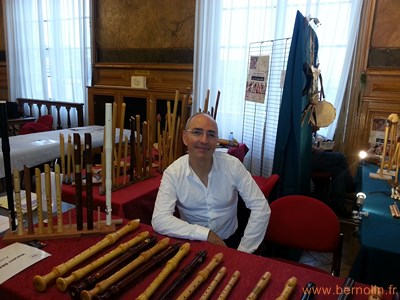 |
Several animations (concerts, instrument makers exhibition, conferences) will be proposed during this now majot week-end around Music.
You will be acquainted with the various instruments I will show on my stand : resin recorders, traversos, but also a range of Boxwood and Maple recorders : baroque Altos at 442 Hz and 415 Hz, Voice Flutes at both pitches, and the very nice Tenor 442 Hz after Bressan.
|
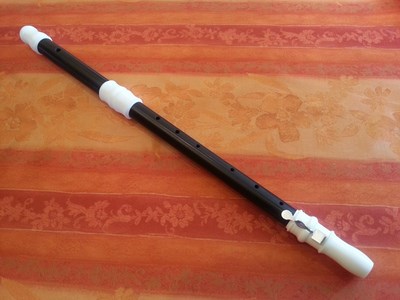 |
| News : The Hotteterre Baroque flute
Here is the last creation form Bernolin workshop : a baroque flute after an original made by Hotteterre, available exclusively in resin. This is a quite large bore instrument, with a powefull and warm sound.
You can order your Hotteterre on the online store
|
|
|
News : the 415 Hz Wide Bore Recorder
Around 1730, Thomas Stanesby Jr created a concert tenor recorder with the look of a massive traverso. This recorder can be seen nowadays at the Paris Museum.
I decided to improve the Baroque Alto Recorder, and the result is the Wide Bore Recorder. The general diameter of the bore and the windway width have been both increased.
The Wide Bore Recorder remains a baroque recorder in its conception, but is a louder instrument. It can accept more breath flow, and at this side can be considered as an alternative to very "opened" recorders, which upper register is sometimes disappointing.
Please visit the online shop for the recorders available .
|
|
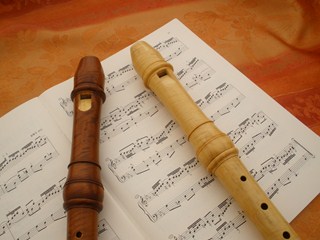 |
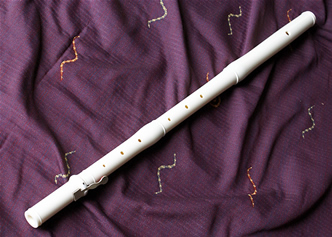 |
News : Resin Baroque Flutes Roger Bernolin
Using the manufacturing process that I've developed for my recorders, I now offer you, in collaboration with my father Roger Bernolin, two models of resin baroque flutes.
You can find all information about them on the site traversos-bernolin.com.
|
|
|
|
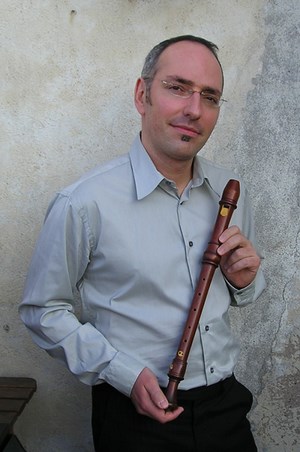 |
|
A little History....
I have always loved the sound of the recorder, an instrument which has captivated me since childhood. My father Roger Bernolin was a Professor of Recorder at the Conservatoire Superieur de Geneva for more than thirty years. A talented player and woodworker in an era when the art of recorder making was being rediscovered, he succeeded with the most rudimentary knowledge and equipment, in making several recorders which he used in concert
|
|
I was trained as a pianist with a degree from the Conservatoire Superior of Geneva where I studied counterpoint, harmony and history of music. In 1994 having completed my studies and not wishing to pursue a teaching career, I decided to put my efforts toward recorder making under the guidance of my father. Clearly, my training as a professional musician proved to be a great advantage.
Because quality and means are inseparable in my view, I made a decision from the start, to invest in tools and precision equipment that would enable me to reproduce the same fine results every time. Though a costly undertaking which required additional knowledge and skill, this investment has allowed me to achieve high precision and beauty in my instruments. In fact I believe it is this marriage of technology and old-world craftsmanship that enable me to satisfy the highest standards of instrument making today.
In 2000, I started to work on a Boehm style transverse flute made of Grenadille wood. This was a monster of a project which created all manner of technical problems. However, my interest and growing technical insights into the field of engineering, allowed me to acquire the know how to make this devilish instrument. Considering that I started with a handicap of 50-100 years of work already done by Japanese and American flute makers, I managed to make several important improvements to the instrument. By adding ball bearings to the mechanism, I provided greater tactile facility for the player, and by creating a layer of support for the mechanism from a single piece of metal, I created a flute with a mechanism that was far more stable.
My persistence in this effort brought me recognition from the French Ministry of Culture, the prize for Best Instrument Maker in France 2006.
Back to terra firma in my workshop after Champagne with the Minister, I now offer several models of baroque recorders, the soprano at 415 Hz to the Voice Recorder. These flutes can be delivered at the original pitch (between 392 Hz and 412 Hz ) according to the model. Pre-baroque are represented by Ganassi in G, Soprano Van-Eyck, and the Rafi Recorders. I am in the process of finishing the Bassette Rafi which will complete the consort of instruments already available.
My objective has always been to recreate the sound of the instruments as they were in their original state.
My instruments are available in Boxwood, Maple, or Grenadille.
Boxwood can be a bit capricious and requires a special stabilization process. Its particular tone color makes it a favorite of recorder players.
Grenadille, also known as Mozambique Ebony, is a very stable wood from the Dalbergia family and is considered top-notch among tropical woods. Compared to Black Ebony from Africa, it is very resistant to cracks.
Maple is an amazing wood because its sound is velvety and powerful but is light in terms of weight. In addition, recorders made of maple are very resistant to the problems of condensation.
In truth, I see very few of my instruments coming back for a service. Are my recorders stable to the point of never having to be worked on or cleaned? Don’t hesitate to return them for a tuneup, you will never regret it.
Finally, I have the greatest respect for the recorder players who help me earn my livelihood. I understand that one makes a substantial investment when purchasing an instrument. For this reason I guarantee my recorders for two years including the appearance of cracks, a problem that is rare in the instruments I produce, and to my way of thinking is more the fault of the maker than the player. Musician that I am, I could not sell an instrument which does not please me completely..
It is my intention with this website, to show you my work and to give you a sense of my ideas about instrument-making. I am convinced that an exceptional instrument does not happen by accident. That is why precision will always be the watchword in that which I produce. An instrument capable of rapid attacks in the upper register, power in the lower register, with perfect intonation and refined color is fundamental to a fine instrument . But beyond that is the personality and richness of its possibilities of musical expression that makes it your instrument.
|
|
|
|
|
|

